| |
|
|
| Bible Code Digest: January/February 2026 Continued |
|
|---|
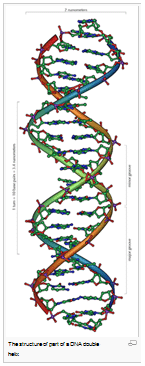
Did the Old Testament Have
Just One Author?
Discovering the First Evidence of
"DNA" in the Bible
DNA diagram from Wikipedia.org
What kind of evidence might support the hypothesis that the entire Old Testament had a single author? In this article, we will look at a phenomenon that at first appeared small, but then expanded into a sprawling, mind-boggling mega-structure of codes contained in an inconceivably small set of Hebrew letters that threads its way throughout the entire Old Testament.
In past Bible code investigations, we have been working with two dimensional matrices (like a crossword puzzle array or an expanded Scrabble board), or with multi-dimensional clusters, consisting of numerous matrices that all include a small segment of literal text. Now, we are looking at a one-dimensional straight line of Hebrew letters, like just one column of a very large Scrabble board, that contains the impossible: a column of only 372 Hebrew letters (at a skip of 3,806 letters between each successive letter) that includes the following collection of lengthy codes:
Table 1
The 13 Codes Found in a Single Column of a Code Matrix
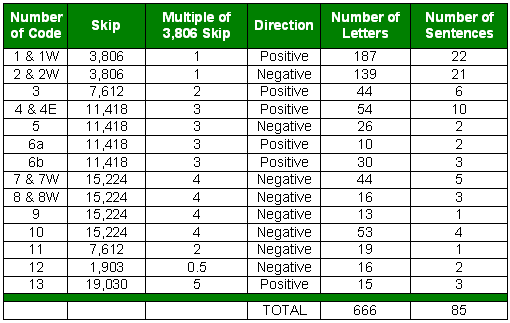
How could there be 666 letters (and 85 sentences) of code within only 372 Hebrew letters? It is much like a DNA molecule. It consists of strands that wrap around one another in a double helix. However, this collection of codes also includes a few triple helixes and a few quadruple helixes as well. The letters in this single column matrix include letters from all but three of the 39 books of the Old Testament, tying together the entire book in a package. Only the very short books of Nahum, Haggai and Jonah are not touched by this single column of encoded letters, which is mind-boggling.
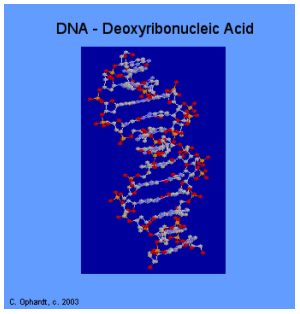
DNA diagram from Elmhurst.edu.
Just like a mutated gene, however, the content of this collection of codes is a series of messages about something bad, or defective, whether it be a person, a series of events, or a movement of history. It is not that the author of the text and codes is bad, but that the author could be describing something that didn't go according to the original plan, which was for good. It is truly remarkable how consistent the content of these codes is. There is a noticeable absence of positive subject matter in these codes. That in itself is highly improbable. If these "codes" were random, one would expect that some of the content would either be positive or nebulous. But it is not. It is basically all bad.
In a previous article, we presented the codes that Moshe Shak had found after searching for extensions to a short code about Mel Gibson. Within a single column of only 147 Hebrew letters, he had found five codes nested within one another. In total, these codes consisted of 371 letters in 52 sentences, as summarized below.
Table 2
The Five Codes Found in a Single Column of a Code Matrix

After publishing this article, we thought Shak's investigations had been completed. Some months afterward, we noticed that three of the above five codes stopped just short of the end of the Tanakh. This suggested the possibility of the existence of wrapped extensions to these codes that would extend into the Torah after finishing up at the end of the Tanakh.
Shak found wrapped extensions to two of these three codes. One was 40 letters long (Code 1W) and included the phrase A rounded end, which Shak believes is strongly descriptive of the nature of a wrapped code. This increased the 147-letter-long code in the earlier article to 187 letters. The second wrapped extension was 29 letters long (Code 2W). It increased the 110-letter-long code in the earlier article to 139 letters.
We also asked Shak to check for extensions prior to the original five long codes he had found and he discovered one, increasing a 44-letter-long code to 54 letters (Code 4E).
Since he had found codes at double and triple the original skip of 3,806 letters, we asked him to check for other possible codes at double and triple the original skip. He found two more codes in an alternative triple skip to the two triple skip codes he had already covered. These codes were 30 and 10 letters long, respectively, and were separated by a single letter that was not part of either code (Codes 6a and 6b).
Having previously found codes at double and triple the original 3,806 skip, we asked Shak to search for codes at quadruple the original skip. He found four new codes, with lengths of 53, 44, 16 and 13 letters. Two of them were wrapped codes, running up to the end of the Tanakh and then continuing on in the Torah (Codes 7 & 7W and 8 & 8W). One of these (Code 7W) kept going beyond the end of the Torah, and continuing on into the rest of the Tanakh. The ninth code (Code 9) was in the vicinity of the beginning of the earliest discovered codes. The tenth code (Code 10) started at the beginning of the Torah and stretched well into the rest of the Tanakh.
The location of all of these codes is summarized in the following table. The yellow cells represent the codes presented in the prior article. The green cells represent wrapped extensions to codes found in the Tanakh, as well as Code 10, which started in the Torah and continued on into the rest of the Tanakh. The purple and rose cells represent newly discovered codes at three and four times the original skip.
The letter numbers in the first two columns are in reference to the first letter of the first previously discovered code. So the original 147-letter-long code appears in letter numbers 1 through 147.
Table 3
Location of the First 10 Codes Listed in Table 1
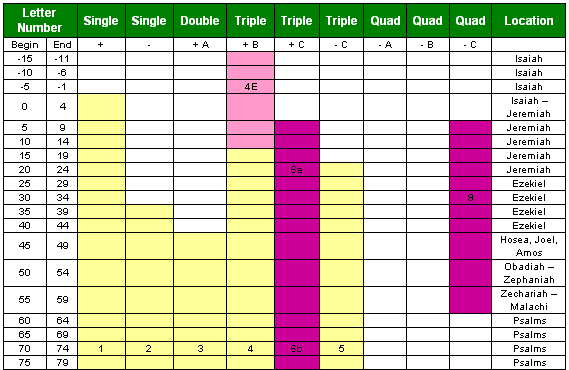
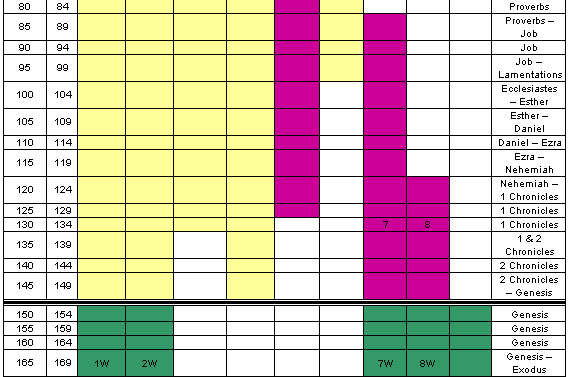
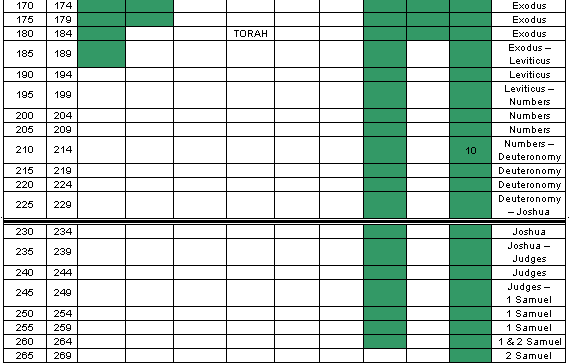
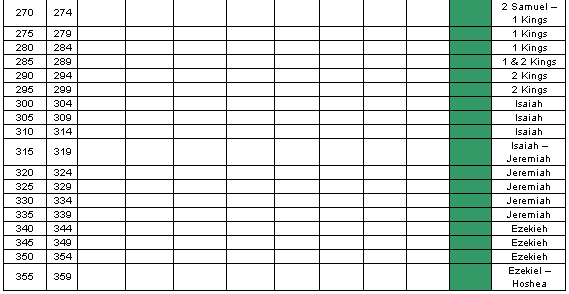
The color scheme adopted above will be continued in the tables below to make it easier for the reader to follow which codes are which. Where an extension was found, we display the entire code, so the reader can get a sense of whether or not the extension fits with the earlier code.
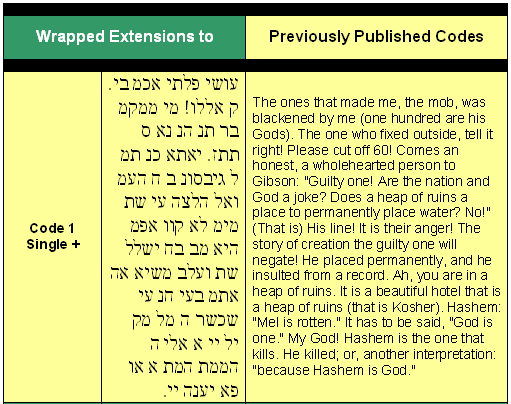

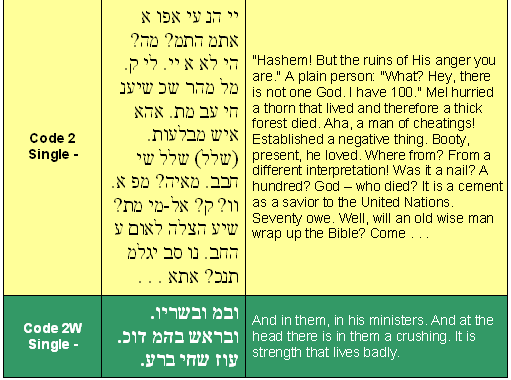
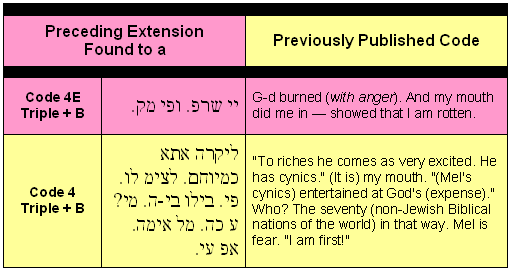
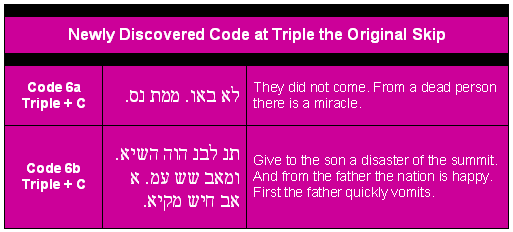
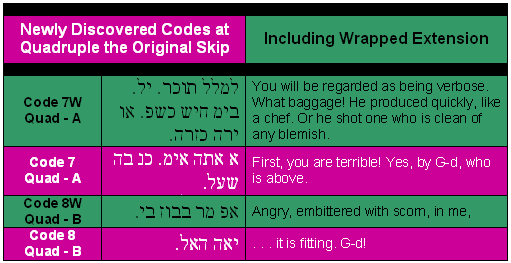

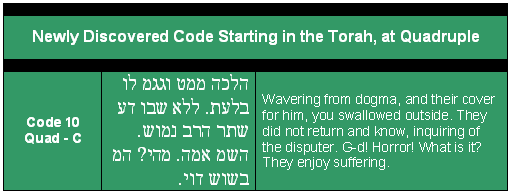
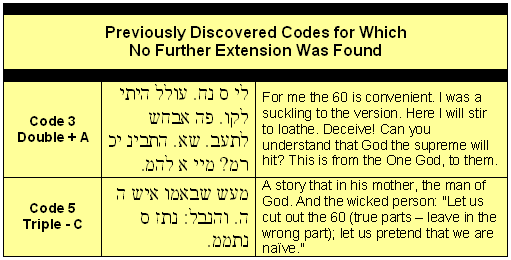
How could all of the above ELSs, which appear to be about a single topic and which are in good Hebrew, just happen to appear within a single column of only 379 letters? To do so would require simultaneous orchestration, while maintaining a surface text that is intelligible and which has inspired millions over more than two millennia. To think that chance could explain this is not reasonable.
There Is Still More . . .
There is yet more that was found in Shak's review of these letter strings, which is not even included in Table 3.

This code runs backwards from letter number 277 to 191.
Shak also found the following code in the string of letters with half the skip of 3,806 (1,903), where every other letter was taken from the original column of Hebrew letters:

This code runs backwards from letter number 206 to 198.
We also sent Shak the letter strings from five times the original skip (19,030 = 5 x 3,806), within this same single column of Hebrew letters. He found the following code:

This code runs from letter 84 to 129.
All of these findings were made using Keys to the Bible software. Because of letter differences in the Hebrew texts used, comparable findings using other software would be different.
Continue to Closeness Comparisons
|
|


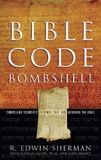 
Bombshell examines two massive, recently discovered clusters of codes in the Hebrew Old Testament. To read more about Bombshell, click here, or click below to order from Amazon today!
 
|







